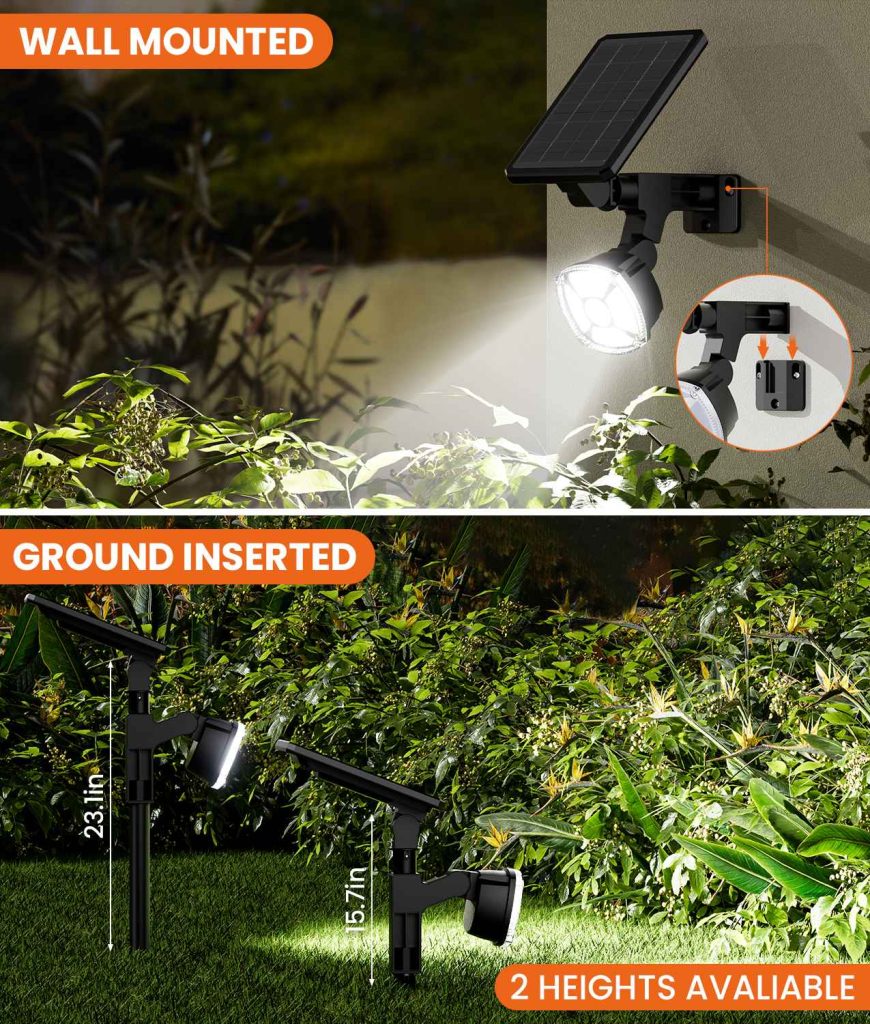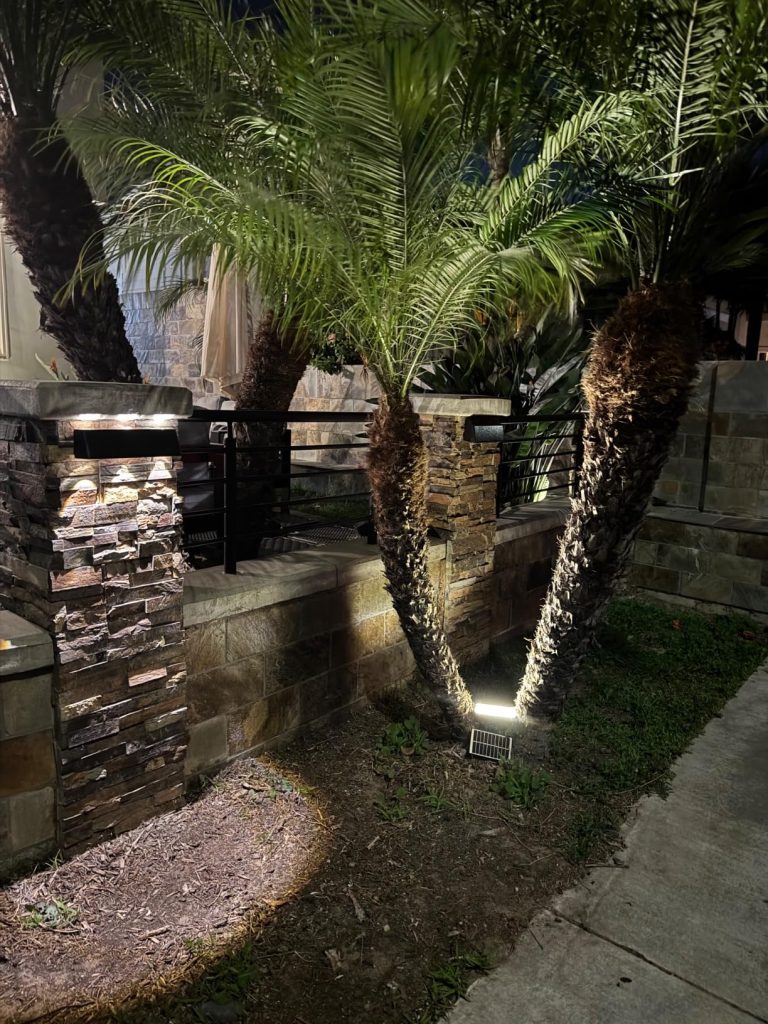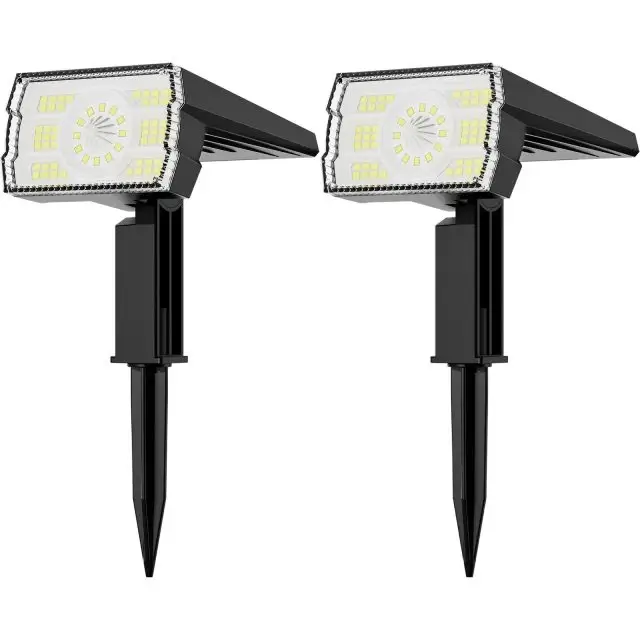Motion activated solar flood lights have transformed outdoor lighting, offering energy-efficient, eco-friendly solutions for homeowners and businesses alike. These lights combine solar power with motion-sensing technology to provide bright, reliable illumination exactly when and where it’s needed. This article explores the technology, applications, installation considerations, maintenance tips, and cognitive insights to help users maximize the benefits of motion activated solar flood lights while addressing common challenges.

Core Technology: Dynamic Threshold Logic for Sensor Triggers
Understanding Ambient Light-Linked Sensor Sensitivity
Motion activated solar flood lights rely on advanced sensor technology to detect movement and trigger illumination. At the heart of this system is dynamic threshold logic, a mechanism that adjusts sensor sensitivity based on ambient light conditions. This ensures the light activates only when necessary, conserving energy and extending battery life.
The sensor typically uses a passive infrared (PIR) system, which detects heat signatures from moving objects, such as humans or animals. According to a 2023 article by SolarTech Insights, PIR sensors in modern solar flood lights can differentiate between small animals and larger objects, reducing false triggers. The ambient light-linked sensitivity further refines this process by adjusting the sensor’s response based on daylight levels. For example, during dusk or dawn, the sensor may require a stronger motion signal to activate, preventing unnecessary operation in partially lit conditions.
This technology is critical for user needs, as it balances functionality with efficiency. Homeowners want lights that activate reliably at night but don’t waste energy during the day. By integrating dynamic threshold logic, motion activated solar flood lights meet these expectations, providing bright illumination only when motion is detected in low-light conditions.
Exploring Scenario Applications
Motion activated solar flood lights are versatile, addressing a range of user needs in diverse settings. Below are three key applications that highlight their adaptability.
Nighttime Gardening Lighting
For avid gardeners, nighttime access to outdoor spaces is essential, whether for maintenance, harvesting, or simply enjoying the garden’s ambiance. Motion activated solar flood lights provide targeted illumination for pathways, flowerbeds, or vegetable patches. Unlike traditional lighting, these lights don’t require complex wiring, making them ideal for remote garden areas. A 2024 review from Green Living Magazine emphasized that solar flood lights with adjustable brightness settings allow gardeners to customize light intensity, protecting sensitive plants from excessive exposure.
Users can install these lights along garden paths or near seating areas, ensuring safe navigation and highlighting aesthetic features. The motion-sensing feature ensures the lights activate only when someone enters the garden, reducing energy waste and minimizing disturbance to nocturnal wildlife.
Smart Lighting for Pet Play Areas
Pet owners often need safe, well-lit spaces for their animals to play or exercise at night. Motion activated solar flood lights are perfect for backyards or pet runs, as they activate when pets move within the sensor’s range. This eliminates the need for constant manual switching, which can be inconvenient during evening walks or playtime.
According to a 2025 article in Pet Home Solutions, pet-friendly lighting should avoid harsh glare to prevent startling animals. Many modern solar flood lights offer soft-start technology, where the light gradually brightens upon activation, creating a pet-friendly environment. This feature addresses user concerns about safety and comfort, ensuring pets can play freely without sudden bursts of light.
Temporary Retrofits in Old Hallways
Older homes or buildings with outdated lighting systems benefit greatly from motion activated solar flood lights. These lights serve as temporary or permanent retrofits in hallways, stairwells, or entryways where electrical upgrades are impractical. Their wireless design allows for quick installation without costly renovations.
A 2024 post on HomeTech Forum noted that solar flood lights with adhesive mounts or magnetic bases are particularly popular for renters or those in temporary housing. Users appreciate the flexibility of repositioning lights as needed, addressing the need for adaptable, low-commitment lighting solutions in older structures.
Blind Spot Selection
Choosing the right installation location and settings for motion activated solar flood lights is crucial to maximizing their effectiveness. Two key factors to consider are the sensor detection angle and installation height, as well as battery life considerations during adverse weather.
The Golden Ratio of Sensor Detection Angle and Installation Height
The effectiveness of a motion activated solar flood light depends on its sensor’s detection angle and the height at which it’s installed. Most models offer a detection angle between 120° and 180°, with higher-end units providing adjustable angles. A 2023 study by Outdoor Lighting Pros found that a 140° detection angle paired with an installation height of 8–10 feet creates a “golden ratio” for most residential applications. This configuration ensures a wide coverage area without triggering the light from distant or irrelevant movements.
For example, installing the light too high (above 12 feet) may reduce sensitivity to smaller movements, such as those of children or pets. Conversely, mounting it too low can limit the coverage area and increase false triggers from ground-level activity. Users should test the sensor’s range after installation, adjusting the angle to avoid blind spots, such as corners or recessed areas.

Battery Life Attenuation Factor in Rainy Days
Solar flood lights rely on batteries charged by solar panels, but prolonged cloudy or rainy weather can reduce charging efficiency. According to a 2024 report by EcoEnergy Solutions, battery life attenuation can reduce runtime by up to 40% during extended overcast periods. To address this, users should prioritize lights with high-capacity lithium-ion batteries (at least 2000mAh) and efficient solar panels.
Additionally, many modern models include power-saving modes that reduce brightness or activation frequency during low-charge conditions. Users in regions with frequent rainy days should select lights with these features to ensure consistent performance, addressing a common pain point for those in less sunny climates.
Maintenance Tips
To keep motion activated solar flood lights performing optimally, regular maintenance is essential. Below are two key practices to address common user concerns.
Cleaning Cycles for Sensor Dust Screens
Dust, pollen, and debris can accumulate on the sensor’s dust screen, reducing its sensitivity and causing missed triggers. A 2025 guide from Solar Home Advisor recommends cleaning the sensor every 3–6 months, depending on the environment. Use a soft, damp cloth to gently wipe the sensor surface, avoiding abrasive materials that could scratch the lens.
For users in dusty or pollen-heavy areas, more frequent cleaning (every 1–2 months) may be necessary. This simple maintenance step ensures the sensor detects motion accurately, addressing user frustration with unreliable activation.
Winter Solar Panel Tilt Adjustment Techniques
In winter, lower sun angles can reduce solar panel efficiency, especially in higher latitudes. A 2024 article in Renewable Energy Today suggests adjusting the solar panel’s tilt angle to capture maximum sunlight. For most regions, tilting the panel 15–20° steeper than the latitude angle during winter months optimizes charging.
Users can achieve this by installing lights with adjustable solar panel mounts or using aftermarket tilt brackets. This maintenance step is particularly relevant for users in northern climates, ensuring consistent performance despite shorter daylight hours.
Cognitive Breakthrough: Addressing Common Misconceptions
Understanding how motion activated solar flood lights work can dispel common misconceptions and enhance user satisfaction. Below are two key insights that address user concerns and clarify functionality.
Sensor Delay Does Not Indicate a Fault
Many users assume that a delay in light activation signals a malfunction, but this is often intentional. Motion activated solar flood lights are designed to adapt to human movement speeds, typically incorporating a 1–3-second delay to prevent rapid on-off cycling. A 2023 article in Smart Home Journal explains that this delay aligns with average walking speeds (3–5 mph), ensuring the light remains on as the user moves through the detection zone.
This feature addresses user needs for smooth, uninterrupted illumination while conserving battery life. Educating users about this design principle can reduce unnecessary returns or complaints about perceived faults.
Wide Floodlight Angles Can Cause Light Pollution
While wide-angle floodlights (120° or more) provide broad coverage, they can contribute to light pollution, disturbing neighbors or wildlife. A 2025 study by the International Dark-Sky Association found that poorly aimed solar flood lights can increase skyglow by up to 15% in suburban areas. Users should aim lights downward and adjust the beam angle to focus on the intended area, such as a driveway or pathway.
Some models offer adjustable lenses or shields to narrow the beam, addressing user concerns about environmental impact and neighbor relations. By selecting lights with customizable angles, users can balance coverage with responsible lighting practices.
Conclusion
Motion activated solar flood lights are a powerful, eco-friendly solution for a variety of outdoor lighting needs, from gardening to pet play areas to retrofitting old hallways. Their core technology, including dynamic threshold logic and ambient light-linked sensitivity, ensures efficient and reliable performance. By carefully selecting installation locations, maintaining the lights properly, and understanding their design principles, users can maximize functionality while addressing common challenges like battery life in rainy weather or light pollution.
This guide integrates insights from recent articles and adds practical advice tailored to user needs, offering a comprehensive resource for anyone looking to invest in motion activated solar flood lights. Whether you’re illuminating a garden, securing a pet area, or upgrading an old hallway, these lights provide a sustainable, user-friendly solution for modern outdoor lighting.


Leave a Reply